Aldi vs. Lidl: Which Discount Grocer Does It Better?
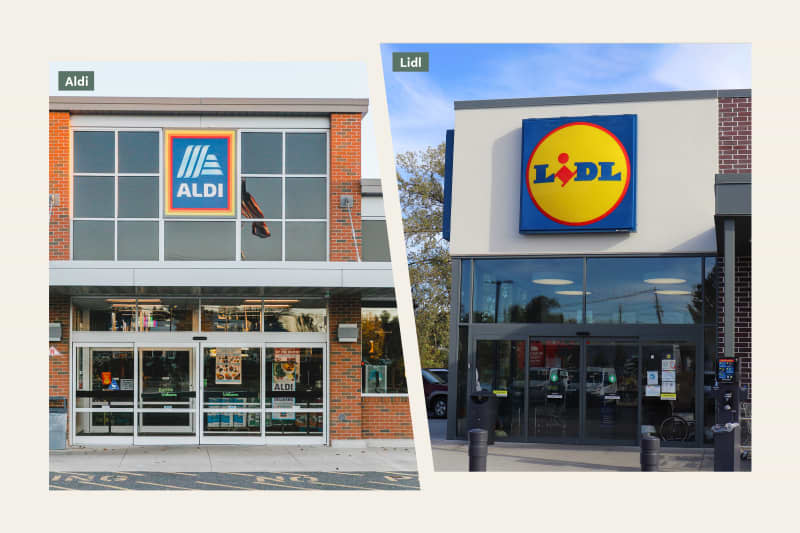
Since opening its first store in the United States in the 1970s, Aldi has long been a budget grocer’s standby stop. Its ultra-affordable prices (so low they almost make you feel like you’re getting away with something), pared-down displays, and small-footprint stores have put Aldi in league of its own — that is, until Lidl entered the chat.
Like Aldi, Lidl is a low-to-no-frills grocery store with a wide selection of store-brand items sold at deep discounts. It, too, has German origins (random, right?), and, heck, even its logo brings a sense of déjà vu.
On the flip side, there are some differences to note (outside of just how widespread Aldi is in the U.S.). Both grocers have a similar number of stores worldwide (around 12,000 each), although Lidl’s roughly 170 U.S. stores have some catching up to do with Aldi’s 2,300+. Still, Lidl is making a concerted effort to prove Aldi isn’t the only name in the budget-grocery game. Personally, I’ve never been the same since my first Lidl shop (when I became very familiar with the store’s buttery — 79 cent! — croissants), and I just want everyone to have that experience.
As a former grocery store employee who’s well-acquainted with the best cheap grocery stores in America, I analyzed both Aldi and Lidl across a variety of categories, including how well they are stocked, prices, and overall shopping experiences. (As I’ve said many times before, low prices are not the only benchmark.) So with that in mind, let’s answer the ultimate question: Which low-price grocer, Aldi vs. Lidl, reigns supreme?
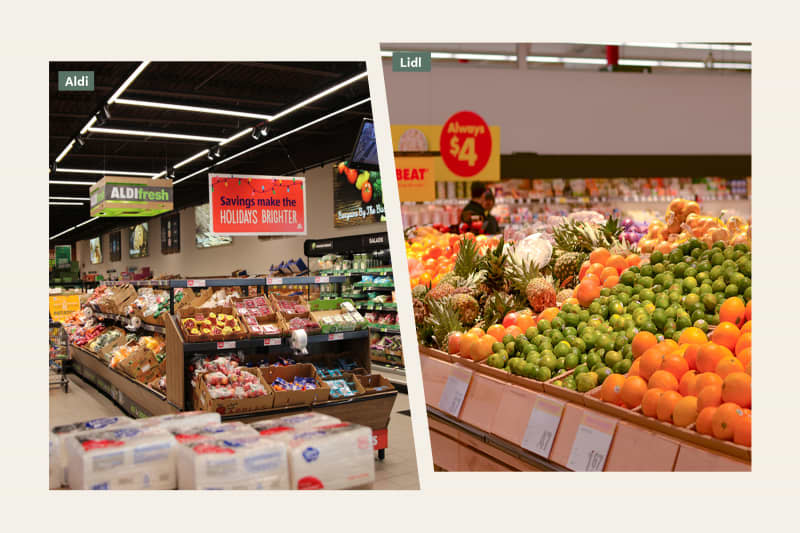
Product Variety
Both grocers have hundreds of well-priced private-label items across the store (like almond butter, frozen chicken nuggets, and salad mixes). While Aldi packs plenty of goodies to the square inch, including things like power tools and hand blenders, Lidl just edges a bit more ahead with how little I need to stop elsewhere for name brand-items and toiletries.
The math is there: Aldi carries 1600 products on average in its stores (90% are private label), while Lidl sells about 2,000 (80% are private label).
Lidl also tends to roll out some exciting, not quite everyday grocery items with a bit more frequency than what I’ve seen at Aldi, like its most recent “Taste of Greece” products, which features two flavors of grape leaves, specialty olive oil, and puff pastry stuffed with cheese and olives. On a similar note, I do have to give Aldi some credit for its great home goods selection, but we are talking groceries here.
Takeaway: This is a win for Lidl. The availability of more name-brand items (I’ve spotted things like M&Ms, Cafe Bustelo, fun Doritos flavors, and Acme smoked salmon) plus exciting new private-label items (I recently spotted Austrian sachertorte!) means I get everything I want in one stop.
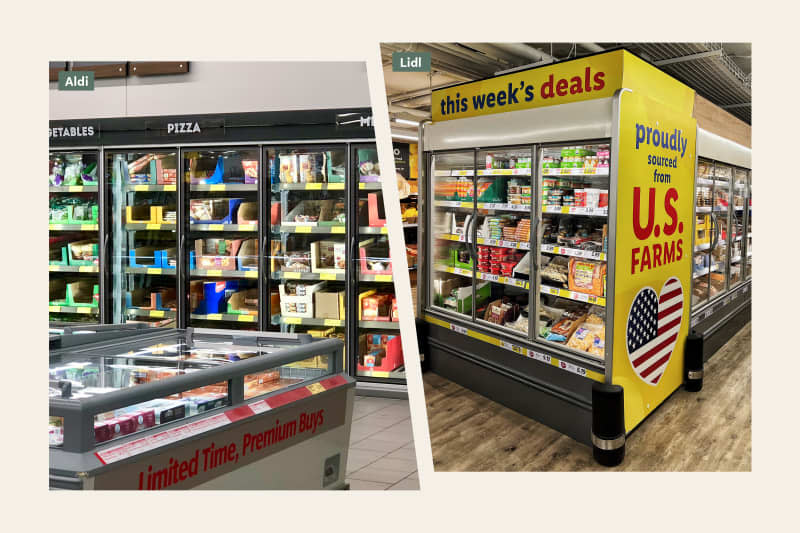
Product Availability
The hope (and goal) of any grocery run is to visit that store — at almost any hour — and have a wide selection of items to choose from, or swap in when substitutions are needed. As a former grocery store employee myself, I’m sensitive to supply chain disruptions and other factors outside of the staff’s control that keep fully stocked shelves at bay. That being said, I’ve noticed Lidl’s shelves are less empty than the ones at Aldi. (The stores I frequent are in the same suburban city in North Carolina, and most recently I visited them within 30 minutes of each other).
To be fair, Aldi has a more widespread fanbase (and more locations) in that area, while Lidl has a lower name-ID. Although I’ve noticed a similar trend at Aldi locations in California (Lidl is currently only on the East Coast.)
Takeaway: For me, it’s a clear win for Lidl for its product availability store-wide across the sections.
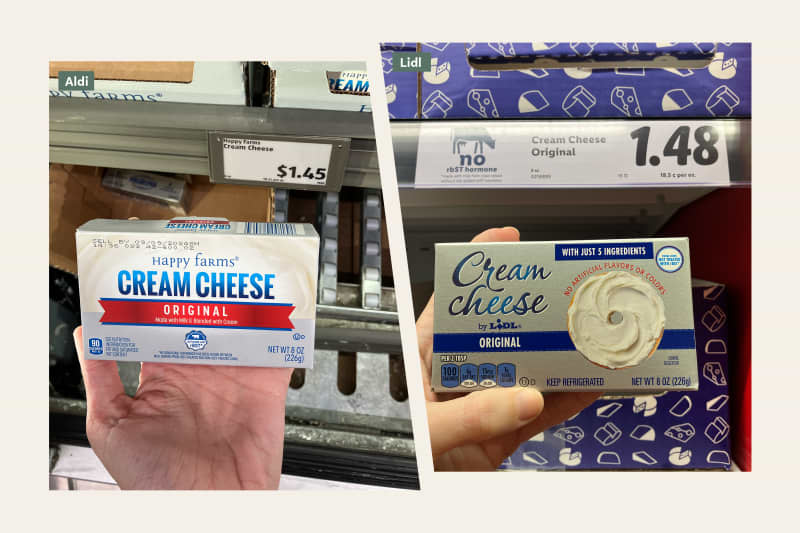
Prices
I chose half-a-dozen popular groceries and compared prices between an Aldi and a Lidl location both based in Central North Carolina. Of the six products selected, Aldi had the cheapest price for all of them, although in some instances (cream cheese, pie crust), the difference was a few pennies.
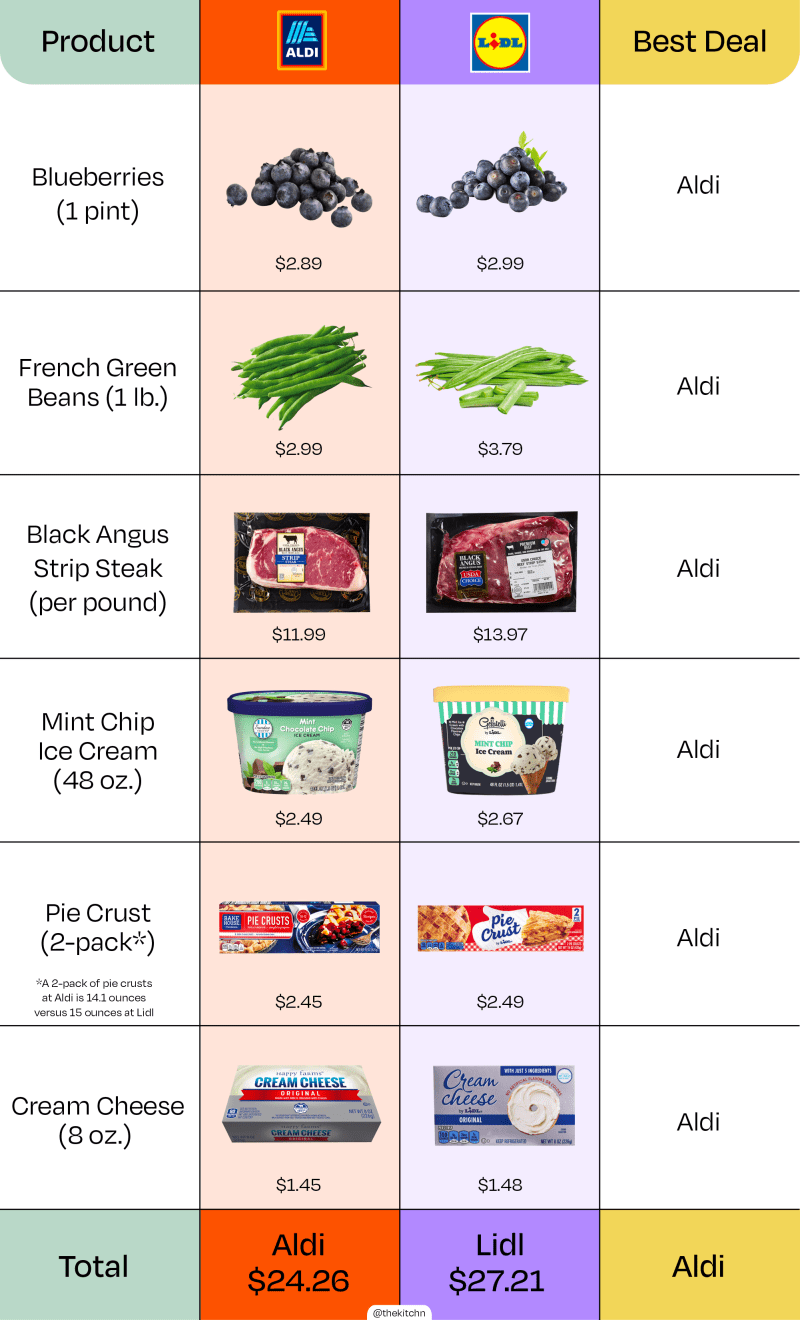
Takeaway: Aldi takes it. The OG discount grocery really lives up to the hype with a clean sweep of lower-priced items.
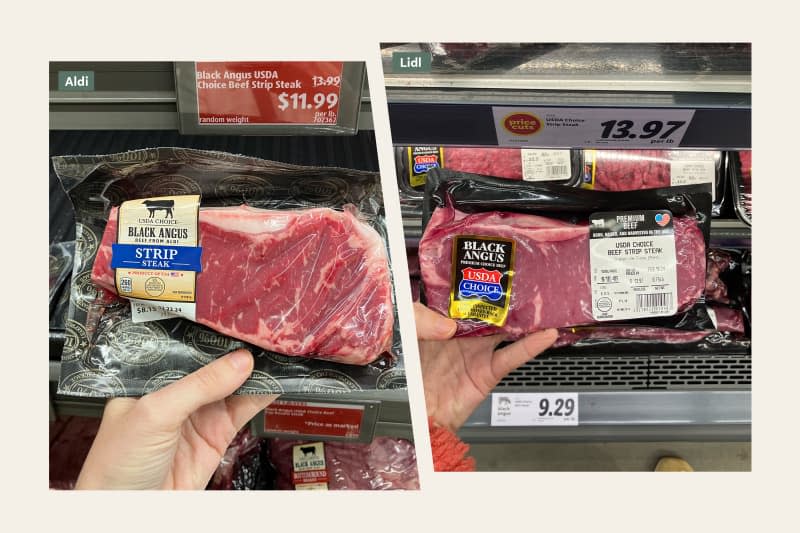
Product Quality
Of course, low prices are only as good as they deliver on quality, too. Section by section, both Aldi and Lidl have their own strengths. I’m always going to beeline it to Lidl’s bakery section for a freshly made treat, while Aldi’s wine section will forever warrant a visit from me. As you work your way through the store, you’ll notice that Aldi’s cheeses are worth a trip alone — especially if you want to build a cheese board that looks like $$$ but is solidly $, while Lidl’s seafood is more expansive than Aldi’s selection (and includes both fresh and frozen, featuring more premium items like Acme smoked salmon and Greek-style mussels!). Lidl also has great pre-made food (like roasts and mashed potatoes), which Aldi doesn’t typically sell.
Takeaway: Lidl wins, but just by a hair. You get what you pay for, and it’s still a pretty solid deal at either grocer. But for just a few cents more, the ratio of low price point to quality is more of a match at Lidl.
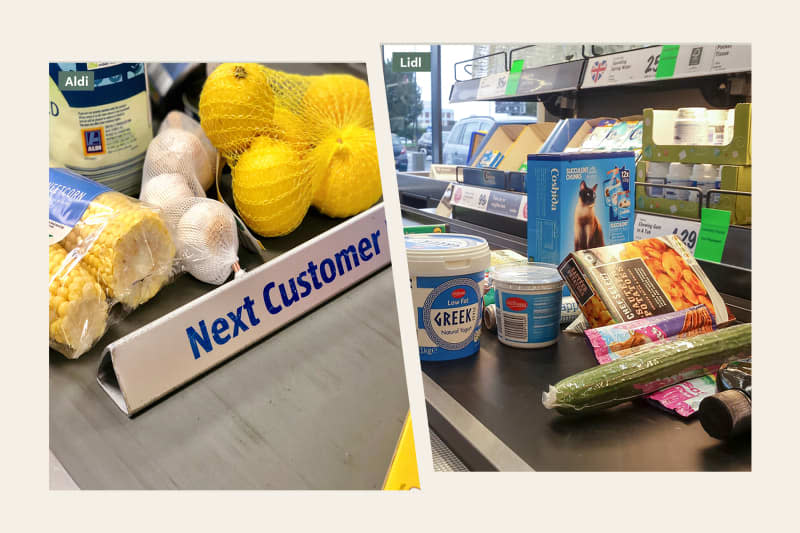
Overall Shopping Experience
After wandering through the aisles at both retailers, Aldi and Lidl really do start to feel like they’re twins and not just sisters. They each have pared-down product displays, self-bagging, and identical return-it-if-you-don’t-love-it policies (which helps them keep prices low and customers loyal).
While both Lidl and Aldi are relatively small in square footage (as compared to grocers like Whole Foods, Walmart, or Kroger), I’d say that Lidl’s is much easier to maneuver around, whether it be by square footage or how the sections are arranged to avoid bottlenecks. Especially when you’re hunting for deals, a bit of breathing room is a super-nice perk.
From there, the differences really come down to how well-staffed each store is and their cart system — Lidl tends to have a few more employees out on the sales floor and its cashiers stand up, whereas Aldi is minimally staffed and the cashiers are seated. Aldi’s cart system operates on its quarter-return system, whereas Lidl carts roam free (for better or worse). Lidl also plays music (Aldi can be almost too quiet for me), which makes it more of a pleasant environment — one I don’t necessarily feel that I need to rush away from.
Takeaway: I must crown Lidl as the winner for me just from shopping experience alone.
Of course, you might very highly disagree (I welcome the debate!), but maybe give Lidl a try (at the very least, for an apple turnover). Maybe I’ll see you there!
Which grocer do you prefer to shop at? Tell us about it in the comments below.
A version of this story was first published on September 1, 2020, by Lisa Freedman.

